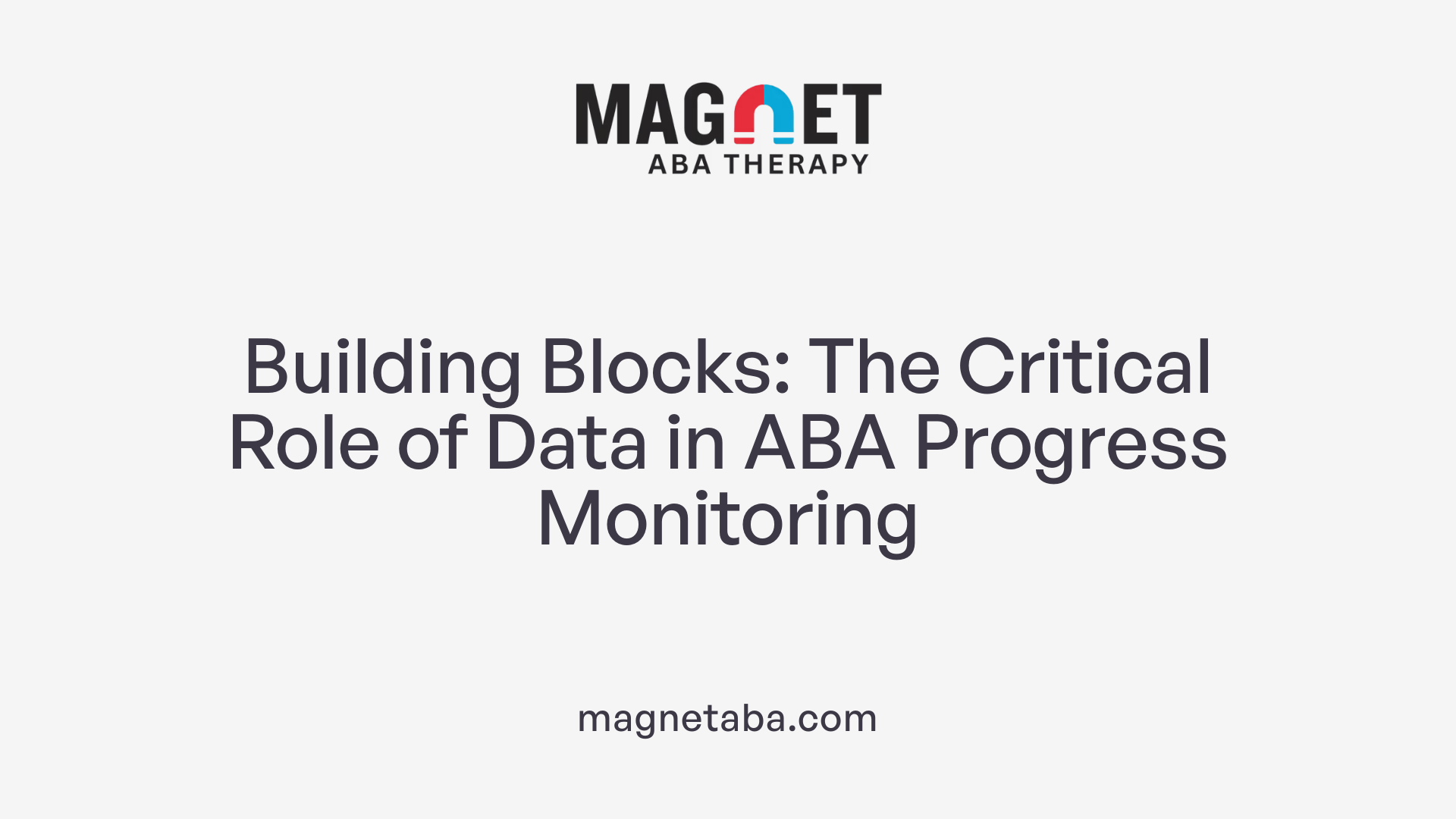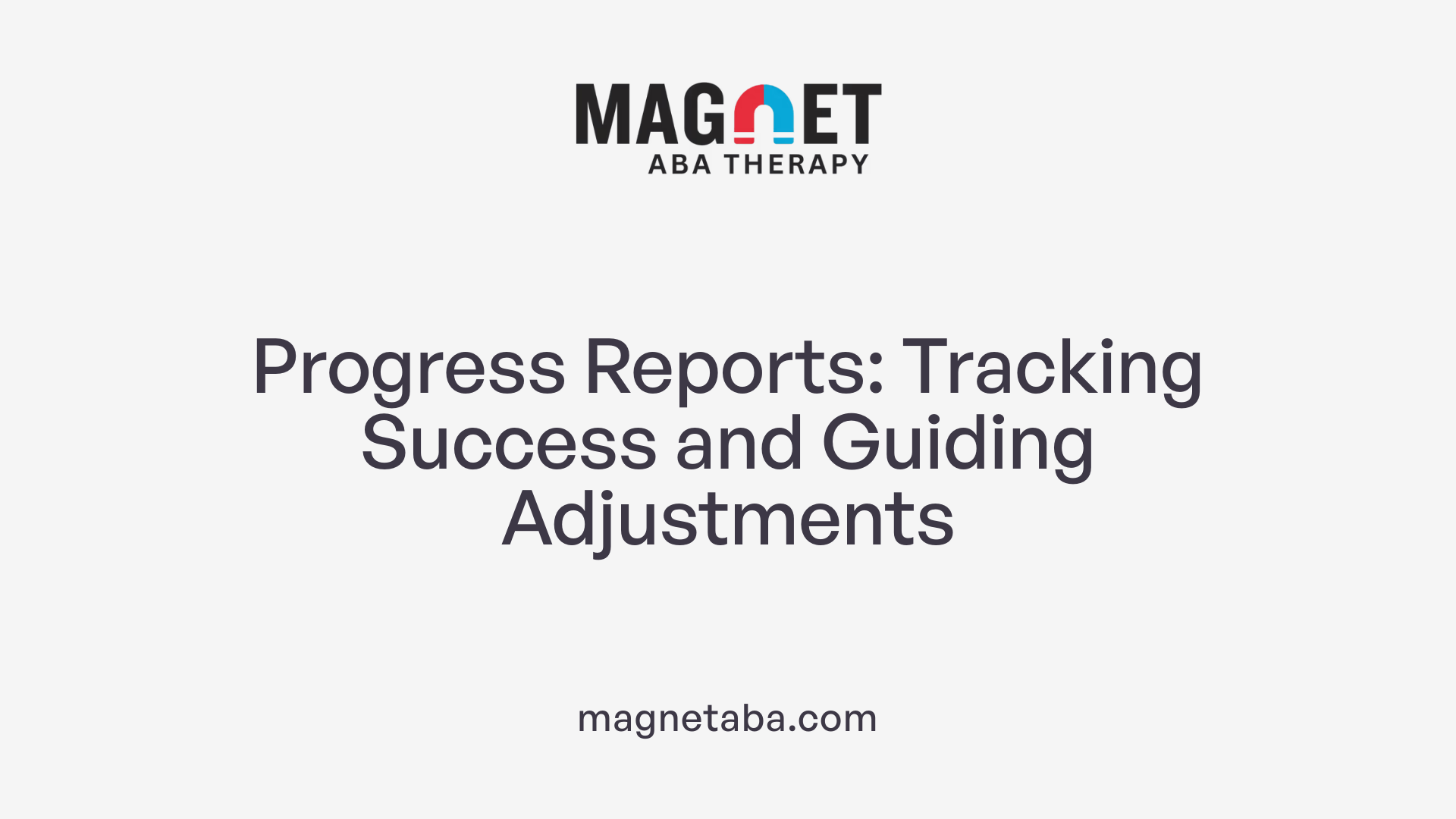Understanding Progress Evaluation in ABA Therapy
Applied Behavior Analysis (ABA) therapy is a widely used intervention for individuals with autism, focusing on enhancing functional skills and reducing challenging behaviors. Assessing progress in ABA programs is critical to ensure that interventions remain effective and tailored to the individual's evolving needs. This article explores how therapists systematically measure and evaluate progress in ABA therapy, combining scientific data collection, standardized assessments, clinical expertise, and family involvement to support ongoing development.
Foundations of Progress Assessment in ABA Therapy

What is Applied Behavior Analysis (ABA) therapy and how is it used to support individuals with autism?
Applied Behavior Analysis (ABA) therapy is a scientific, evidence-based approach designed to support individuals with autism by improving functional behaviors. The therapy targets increasing helpful behaviors like communication, social skills, and daily living activities while reducing challenging behaviors. Using techniques such as positive reinforcement, ABA provides personalized interventions crafted by a Board Certified Behavior Analyst (BCBA).
Role of assessment in ABA therapy
Assessment is foundational in ABA therapy, serving to identify a child's strengths, weaknesses, and specific behavioral challenges. It guides the creation of tailored treatment plans. Through ongoing data collection methods—such as frequency recording and duration tracking—therapists can monitor progress and adjust interventions to ensure effectiveness. Assessments also help in setting clear, measurable goals that are regularly reviewed every 3 to 6 months.
Initial comprehensive assessments
The first step in ABA therapy involves a comprehensive initial assessment spread over several sessions and weeks. This stage establishes a baseline by using direct observations, parent interviews, standardized tests like VB-MAPP or ABLLS-R, and Functional Behavior Assessments (FBA) to understand the causes of challenging behaviors. The results inform individualized goals and intervention strategies.
Involvement of BCBA in goal setting
Certified BCBAs play a critical role in interpreting assessment results to develop SMART (Specific, Measurable, Achievable, Relevant, Time-bound) goals. They oversee the programming and evaluation of interventions, ensuring alignment with evidence-based practices. The BCBA also collaborates closely with parents and caregivers to incorporate observations from various environments and supports family involvement through training and feedback throughout the therapy process.
Who Delivers ABA Therapy? Professional Expertise and Qualifications

Credentials of Therapists
ABA therapy is delivered by specialized professionals trained in behavior analysis. The main providers include Board Certified Behavior Analysts (BCBAs) and Registered Behavior Technicians (RBTs). BCBAs usually possess at least a master's degree in psychology, education, or applied behavior analysis and have earned certification from the Behavior Analyst Certification Board (BACB). RBTs receive targeted training to implement behavioral intervention plans under supervision but have less extensive certification requirements.
Role of Board Certified Behavior Analysts (BCBAs) and Registered Behavior Technicians (RBTs)
BCBAs play a leading role by assessing clients' behavioral challenges, designing individualized treatment plans, and overseeing the therapy process. They ensure programs align with evidence-based practices and adapt interventions based on continuous progress monitoring. RBTs work closely with clients by implementing therapy plans and collecting critical data under the guidance of BCBAs.
Training and Certification Process
To become a BCBA, candidates must complete a rigorous process including about 1,500 to 2,000 hours of supervised fieldwork and pass a comprehensive certification exam. This journey often spans several years, combining formal education with practical experience. Many states also require licensure and ongoing continuing education to maintain qualifications.
Importance of Therapist Qualifications for Progress Evaluation
Qualified therapists are essential for effective progress evaluation and treatment adjustment. Their expertise ensures the accurate collection and interpretation of behavioral data, proper use of standardized assessments, and collaboration with families. This professional foundation supports data-driven decision-making crucial for successful ABA therapy outcomes.
Systematic Data Collection: The Backbone of Progress Monitoring

What types of data collection are used in ABA therapy?
ABA therapists employ several precise methods to gather information about behaviors and skills. These include frequency recording (counting how often a behavior occurs), duration recording (timing how long a behavior lasts), and interval recording (noting whether a behavior occurs within specific time segments). Each method offers unique insights, allowing therapists to capture detailed patterns relevant to the child's progress.
Why is continuous behavior monitoring important?
Continuous monitoring ensures that therapists and caregivers have up-to-date and accurate information on the child's development. This ongoing data collection helps track behavior reduction and skill acquisition comprehensively over time, supporting the dynamic nature of ABA therapy where adjustments may be regularly needed.
How does data-driven decision making support ABA interventions?
By systematically collecting and analyzing data, therapists can identify patterns and trends in the child’s behavior. This empirical approach informs their decisions about which strategies are most effective or require modification. Integrated with tools like visual analysis through charts, data supports objective evaluations rather than assumptions.
How is collected data used to adjust treatment?
The continuous feedback loop enabled by detailed data allows ABA practitioners to tailor treatment plans dynamically. If certain behaviors improve or skills develop faster than expected, goals may be updated; if issues persist, interventions are refined. This ensures therapy stays relevant, impactful, and aligned with the child’s evolving needs.
Visual and Standardized Assessments in Measuring Progress

What is Visual Analysis in ABA Therapy?
Visual analysis in ABA therapy involves transforming raw behavioral data into charts and graphs. This method helps therapists and caregivers observe patterns and trends over time, facilitating a clear understanding of a child's progress. By examining these visual representations, they can assess the effectiveness of interventions and identify when adjustments are necessary.
How Are Charts and Graphs Used to Identify Trends?
Charts and graphs serve as essential tools to summarize collected data from different sessions. They display the frequency, duration, or interval recording of behaviors, making it simpler to spot increases or decreases in target behaviors. For example, a descending trend in challenging behaviors or an ascending trend in skill acquisition can be easily recognized, aiding timely decisions in treatment modifications.
What Standardized Tools Are Employed in ABA Therapy?
ABA therapists utilize several standardized assessment tools to evaluate children's skills and developmental milestones. Prominent among these are:
- VB-MAPP (Verbal Behavior Milestones Assessment and Placement Program): Focuses on language and social skills.
- ABLLS-R (Assessment of Basic Language and Learning Skills – Revised): Assesses language, academic, and daily living skills.
- Vineland Adaptive Behavior Scales: Measures communication, socialization, and daily living abilities.
These assessments systematically evaluate discrete skill domains, helping therapists create tailored treatment goals.
How Do Standardized Assessments Evaluate Developmental Milestones?
These tools provide comprehensive evaluations by breaking down skills into measurable units. They assess various domains such as communication, social interaction, self-help skills, and motor abilities. The results pinpoint strengths and areas needing intervention, providing a structured roadmap for therapy planning. Regular re-assessment ensures that developmental progress is monitored accurately, guiding adjustments in therapeutic approaches.
Incorporating Functional Behavior Assessments (FBA) into Progress Evaluation

What is the Purpose of FBA in Identifying Causes of Challenging Behaviors?
Functional Behavior Assessment (FBA) is a specialized evaluation used in ABA therapy to determine the reasons behind challenging behaviors exhibited by a child. By understanding what triggers these behaviors and what maintains them, therapists can design more effective and targeted interventions. The goal of FBA is not merely to reduce undesirable behaviors but to uncover the root causes so that therapy addresses the underlying needs of the child.
How are Observation and Interviews Involved in FBA?
The FBA process involves systematic and direct observation of the child in different settings to collect data on when, where, and how behaviors occur. This helps to identify patterns and potential triggers. Additionally, interviews conducted with parents, caregivers, and teachers provide valuable insights into the contexts and functions of these behaviors. Combining observational data with information from individuals familiar with the child ensures a comprehensive understanding of behavior dynamics.
What Role Does FBA Data Play in Shaping Intervention Strategies?
Information gathered through FBA guides the creation of personalized behavioral interventions that specifically address the functions of the behaviors. For example, if a behavior serves to gain attention, the intervention may focus on teaching appropriate ways to seek attention. FBA data informs therapists on which strategies are likely to be most effective and supports the ongoing modification of goals and treatment plans. This makes FBA a critical component in ensuring that ABA therapy remains responsive and effective throughout the child's progress.
Parent and Caregiver Collaboration: An Essential Component

Role of parent and caregiver feedback in progress assessment
Parents and caregivers provide crucial insights that enrich the assessment process in ABA therapy. Their observations help therapists understand how behaviors and skills manifest outside clinical settings, offering a fuller picture of a child's progress.
Observations across home, school, and social environments
Children often display different behaviors in various settings. Feedback from parents and caregivers captures nuances in home routines, school interactions, and social activities, making it possible to tailor interventions that are effective across environments.
Family involvement in data collection and therapy implementation
Families participate actively by helping collect behavior data during daily activities. This ongoing involvement ensures consistency in therapy techniques and allows for immediate adjustments based on real-world observations.
Importance of parent training and communication
Training parents is a top priority to empower them with strategies that reinforce learning and behavioral improvements. Communication between therapists and families fosters collaboration, helping maintain therapy gains and ensuring alignment of goals.
Partnering with parents and caregivers transforms ABA therapy into a comprehensive, community-based approach that supports meaningful and sustainable progress for the child.
Progress Reports and Ongoing Treatment Plan Adjustments

What is the Purpose and Content of Progress Reports?
Progress reports in ABA therapy serve to summarize a child’s achievements and areas needing improvement. These reports are created by therapists and reflect insights gathered from systematic data collection methods like frequency recording, duration recording, and standardized assessments such as VB-MAPP and ABLLS-R. Progress reports provide a clear overview of behavioral changes, skill acquisition, and social development, helping parents and caregivers understand how the child is responding to therapy.
How Are Achievements and Areas for Improvement Summarized?
Therapists compile data from direct observations, standardized tests, and parent feedback into charts, graphs, and written summaries. This visual and descriptive analysis highlights notable progress and pinpoints any challenges. It includes information on behavior reduction, skill mastery, and adherence to individualized goals. Areas requiring further focus are identified to optimize intervention strategies.
What Are the Regular Review Intervals for Treatment Plans?
Treatment plans in ABA therapy are reviewed every 3 to 6 months. This ongoing process ensures that interventions remain effective and relevant to the child’s evolving needs. Regular assessment allows therapists to track trends over time, evaluate the impact of teaching techniques like discrete trial training (DTT) and natural environment teaching (NET), and involve families in the adjustment process.
How Are Goals and Interventions Adjusted Based on Assessment Data?
Based on progress report findings and continuous behavior monitoring, therapists revise individualized goals to remain SMART: specific, measurable, achievable, relevant, and time-bound. Adjustments may include modifying behavioral interventions, updating curricula, or enhancing family training components. This dynamic approach ensures therapy remains tailored to the child's strengths, weaknesses, and developmental milestones, promoting sustained growth and success.
Ethical Considerations and Critical Perspectives in ABA Progress Assessment

What challenges or criticisms exist regarding ABA therapy in autism treatment?
Critics of ABA therapy often point to its historical roots where intensive, behavior-focused methods sometimes aimed to enforce conformity to neurotypical behaviors. This focus has raised concerns that it might suppress natural autistic behaviors and impact emotional well-being negatively. Early ABA approaches at times utilized aversive methods and relentless reinforcement schedules, which some found traumatic or limiting to individual autonomy.
Concerns regarding overemphasis on conformity
The traditional emphasis on behavior modification in ABA has been criticized for potentially prioritizing compliance over the individual's preferences, comfort, and self-expression. This overemphasis can inadvertently pressure individuals to conform to societal norms rather than celebrate neurodiverse traits and unique identities. The risk is the unintentional undermining of individuality, emotional health, and self-determination.
Importance of respecting neurodiversity and individuality
Modern ABA practices strive to be more person-centered and respectful by emphasizing positive reinforcement and naturalistic interventions that honor the unique strengths and challenges of each individual. The respect for neurodiversity involves recognizing and valuing different ways of thinking, communicating, and interacting, rather than attempting to "normalize" behaviors. Incorporating the individual's voice, when possible, and collaborating with families help ensure interventions support well-being and dignity.
Ensuring ethical, person-centered assessment and intervention
Ethical ABA assessment and progress monitoring require ongoing reflection to balance goal achievement with respect for the person's autonomy and preferences. Transparent communication with families, individualized goal-setting that includes personal and cultural values, and avoiding punitive or aversive techniques are essential. Regular reviews of treatment progress should involve ethical considerations ensuring that intervention continues to align with the individual’s best interests and fosters their growth without unwarranted pressure to conform.
These critical perspectives remind practitioners and families alike that ABA therapy must evolve continually to provide compassionate, effective support that honors every individual's humanity and uniqueness.
Ensuring Effective Progress Through Comprehensive Assessment
Therapists assessing progress in ABA programs rely on a multifaceted approach that integrates meticulous data collection, standardized testing, comprehensive behavior assessments, and vital collaboration with families. This ongoing process allows for tailored interventions that evolve according to the individual's needs, maximizing developmental outcomes. Despite challenges and critiques associated with ABA, the critical importance of ethical, evidence-based, and person-centered evaluation methods remains clear. Continual assessment and adaptation underpin the success of ABA therapy, supporting individuals with autism to achieve meaningful gains in communication, social skills, and independence.
References
- Tracking Progress: How To Measure ABA Therapy Success
- ABA Therapy: Assessment, Testing & Treatment Plans Guide
- Ultimate Guide To Choosing The Right ABA Therapy For ...
- Applied Behavior Analysis (ABA)
- Applied Behavior Analysis (ABA)
- Applied Behavior Analysis (ABA) for Children With Autism
- The effectiveness of applied behavior analysis program ...
- The Controversy Around ABA
- Applied Behavior Analysis (ABA)
- 6 Benefits of ABA Therapy for Children with Autism












